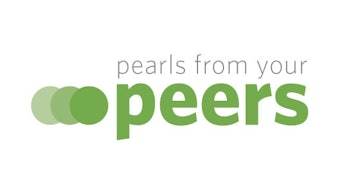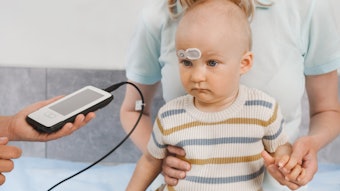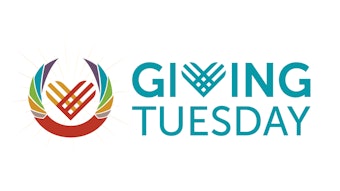The 12 Days of Pediatric Otolaryngology | Holiday Pearls for Practice: Part 1
Even in the bustle of the holidays, there’s joy in what we do: helping children breathe, speak, and hear their way into the New Year.
Lyndy J. Wilcox, MD, MMHC, on behalf of the Pediatric Otolaryngology Committee

The holidays may bring cheer and celebration, but in pediatric otolaryngology, they also bring a chorus of consults and concerns. Infections, injuries, and airway anxieties rarely take time off—sometimes transforming what should be a “Silent Night” into Rudolph’s race down the hospital hallway.
This piece offers a lighthearted yet evidence-based look at some common pediatric otolaryngology issues that may appear in your clinic or emergency room this season. From a peanut in a bronchial tree to 12 TikToks Tokking, these 12 vignettes reflect the breadth of our field—from newborn airway emergencies to adolescent tinnitus, and everything in between. Each “day” highlights a familiar question, a best-practice approach, and a reminder that even in the bustle of the holidays, there’s joy in what we do: helping children breathe, speak, and hear their way into the New Year.
A Peanut in the Bronchial Tree
How should we evaluate and manage suspected foreign-body aspiration in children?
Few pediatric emergencies evoke the same urgency as a possible foreign body aspiration. The classic triad—sudden cough, wheeze, and unilateral decreased breath sounds—is inconsistently present, making a high index of suspicion essential. Even when chest radiographs appear normal, any history of choking with persistent symptoms should prompt airway evaluation. Rigid bronchoscopy remains the gold standard for both diagnosis and removal, allowing direct visualization and safe extraction under controlled conditions.
Chest computed tomography (CT) can help identify radiolucent or atypical foreign bodies when plain radiographs are inconclusive, potentially reducing unnecessary bronchoscopies in stable, low-suspicion cases.1,2 However, CT should never delay bronchoscopy in a symptomatic child, as airway obstruction can progress rapidly. Complications from delayed removal include pneumonia, atelectasis, and granulation tissue formation. Nuts, seeds, grapes, and hot dogs remain the leading causes of fatal aspiration in toddlers, underscoring the importance of prevention counseling.3,4 Parents should be advised to avoid high-risk foods until at least four years of age and to supervise children closely during meals. When in doubt, a negative bronchoscopy is far safer than a missed foreign body—and the earlier we act, the more likely the season stays calm and bright.
Two Snotty Nares
Is this runny nose sinusitis? Or just daycare?
Persistent nasal congestion in children is more often caused by adenoid hypertrophy or allergic rhinitis than by true chronic rhinosinusitis (CRS). To meet diagnostic criteria, symptoms such as nasal obstruction or congestion and rhinorrhea and/or cough must persist for at least 12 weeks and be accompanied by objective findings of inflammation on endoscopy or imaging.5
Initial therapy includes saline irrigation and intranasal corticosteroids. Adenoidectomy often addresses the biofilm-laden reservoir behind the nasal cavity—even when the adenoids are not particularly enlarged. During the winter months, when every congested child’s nose looks as red as Rudolph’s, it’s worth remembering that most cases are benign, self-limited, and respond well to conservative care. If symptoms persist after adenoidectomy, a CT scan is warranted prior to considering functional endoscopic sinus surgery (FESS).5
Three cm Neck Mass
When should we image, biopsy, or excise a neck mass in a child?
Neck masses are one of the most common winter referrals in pediatric otolaryngology, and most represent reactive lymphadenopathy following viral infection. Observation is reasonable for mobile, nontender nodes smaller than 2 cm that regress within four to six weeks. Persistence, firmness, or fixation, however, should prompt further evaluation. “Red flags” include rapid growth, size > 2 cm, supraclavicular location, firmness or immobility, overlying skin changes, systemic symptoms (fever, night sweats, weight loss), or cranial-nerve deficits.
Ultrasound is the preferred initial imaging modality—it differentiates cystic from solid lesions and guides next steps while avoiding radiation exposure. Cross-sectional imaging such as magnetic resonance imaging (MRI) or CT is indicated for deeper or suspicious lesions. Fine-needle aspiration biopsy (FNA) can provide rapid, minimally invasive diagnostic clarity in children with persistent or suspicious neck masses. In a large pediatric cohort, Huyett et al. demonstrated > 94 % sensitivity and > 97 % specificity, with FNA results preventing unnecessary surgery in most cases. The authors recommend FNA as a safe and accurate first-line diagnostic tool when imaging or clinical features are equivocal, reserving open biopsy for lesions that are rapidly enlarging, symptomatic, or cytologically nondiagnostic.6,7
Midline lesions suggest thyroglossal duct cysts, which require Sistrunk excision, or dermoid cysts; lateral masses may represent branchial-cleft anomalies, lymph nodes, or lymphatic malformations. Although most “French hens” in the neck are benign, the ones that don’t fly away after observation deserve a full diagnostic workup before the holidays are over.
Four Calling Birds—and One Hoarse One
How should we approach pediatric hoarseness?
Although most pediatric dysphonia results from benign phonotraumatic lesions—nodules or polyps from vocal overuse, excessive cheering, or “calling birds who sing too spiritedly”—clinicians should also consider evolving habits unique to modern communication. Extended periods of loud talking, FaceTiming, or gaming with background noise can contribute to chronic strain and suboptimal voice use.
Persistent hoarseness deserves flexible laryngoscopy or videostroboscopy to visualize vocal fold structure and motion. This evaluation distinguishes benign lesions from more serious causes, such as unilateral or bilateral vocal fold immobility, recurrent respiratory papillomatosis (RRP) from human papillomavirus (HPV) infection, or congenital lesions that impair vibratory function. When immobility is identified, additional workup should include consideration of prior intubation, surgical or neurologic injury, and imaging of the recurrent laryngeal nerve pathway as appropriate. Suspicion for RRP should prompt biopsy and multidisciplinary management given the potential for rapid recurrence and airway compromise.
The most recent AAO-HNS clinical practice guidelines on dysphonia recommend laryngoscopic evaluation of the larynx if dysphonia persists >4 weeks.8 Other studies suggest pediatric dysphonia should be evaluated if it persists >3 months,9 likely due to the lower risk of malignancy. Empiric treatment for laryngopharyngeal reflux (LPR) is not routinely recommended, as reflux is often over-attributed as the cause of pediatric hoarseness.8 Multiple studies demonstrate limited benefit from proton pump inhibitors without clear gastrointestinal symptoms. Instead, management should prioritize behavioral and functional causes first. Voice therapy with a pediatric speech-language pathologist teaches efficient phonation, balanced breath support, and healthy projection. Supportive measures include maintaining hydration, minimizing throat clearing, reducing background noise, and avoiding yelling, whispering, or prolonged “vocal marathons.” For those “calling birds” this holiday season, a bit of vocal rest and good hygiene can restore harmony faster than any medication.
Five Complete Tracheal Rings
When should we operate, and what else should we look for?
Congenital tracheal rings produce a fixed, circumferential airway narrowing that typically presents with biphasic stridor, respiratory distress, or recurrent pneumonias. Symptoms may worsen with agitation, upper respiratory infections, or feeding, and unlike wheezing, they do not improve with bronchodilators. Cross-sectional imaging such as CT with three-dimensional reconstruction can define the airway anatomy and identify associated vascular anomalies—particularly the pulmonary artery sling frequently seen with complete tracheal rings. An echocardiogram is also critical to evaluate for concurrent cardiovascular abnormalities for surgical planning.
Rigid bronchoscopy confirms the diagnosis and should be performed gently; complete rings are as delicate as gold ones, and even minimal trauma can provoke significant edema and precipitous airway compromise. The examination should include a full evaluation from the nose to the bronchi, as concomitant anomalies could be noted.
Although many cases present in infancy, older children may come to attention with “resistant asthma,” chronic cough, or dyspnea on exertion. Up to 17% of children with complete tracheal rings may be observed with growth of the rings generally occurring over time.10 However, when symptomatic complete tracheal rings are identified, slide tracheoplasty remains the gold-standard repair, offering a stable, growth-compatible airway and excellent long-term outcomes.11,12 Balloon dilation or laser incision alone are discouraged, as they risk tracheal perforation and significant airway edema. The postoperative course requires diligent airway management, as the long incision line is prone to crusting that can significantly impact airflow in these reconstructed segments.
A well-executed slide tracheoplasty can turn even the most precarious airway into one that sings proving that, in the pediatric airway, five complete rings are best replaced by a well-reconstructed one.
Six Geese a Laying—or Six Strep Throats a Year
Who qualifies for a tonsillectomy?
Recurrent sore throats are a common reason families “flock” to the office during winter months, but not all infections are created equal. The 2019 AAO-HNS clinical practice guideline defines a qualifying episode of streptococcal pharyngitis as one that includes sore throat plus one or more of the following: fever >38.3 °C, cervical lymphadenopathy, tonsillar exudate, or a positive Group A Streptococcus. Documentation in the medical record is key—each episode must meet these criteria to count toward surgical thresholds.13
The Paradise criteria remain the standard for surgical consideration: ≥7 well-documented episodes in one year, ≥5 per year for two consecutive years, or ≥3 per year for three years.14 The guidelines also remind us that the natural history of recurrent GAS infection tends to improve over time, even without tonsillectomy, emphasizing the value of observation when infections are decreasing or less severe.13 Testing practices should also follow Infectious Diseases Society of America recommendations: routine testing for GAS is not recommended in children younger than 3 years, given the rarity of streptococcal pharyngitis and rheumatic fever in that age group.15
When surgery is considered, modifying factors that favor earlier intervention include multiple antibiotic allergies, peritonsillar abscess, PFAPA (periodic fever, apthous ulcer, adenitis) syndrome, or concurrent obstructive sleep apnea. Families should also be counseled that tonsillectomy—while highly effective—carries potential risks such as postoperative hemorrhage, dehydration, and anesthetic complications, which must be weighed against the improving natural course of recurrent infection.
Most children with recurrent sore throats eventually improve on their own, with fewer infections each passing year. But for those who continue to meet criteria despite watchful waiting, tonsillectomy remains a reliable solution—quieting the chorus of wintertime “honking” that fills exam rooms every cold and flu season.
Don't miss the exciting conclusion of The 12 Days of Pediatric Otolaryngology | Holiday Pearls for Practice: Part 2, coming in the Bulletin December 2025 EXTRA!
References
- El Khoury P, Makhoul M, El Hadi C, Haber C, Rassi S. CT Scan in Children Suspected of Foreign Body Aspiration: A Systematic Review and Meta-analysis.. Otolaryngol Head Neck Surg. 2024 Jan;170(1):1-12. doi: 10.1002/ohn.433. Epub 2023 Jul 20.
- Azzi JL, Seo C, McInnis G, Urichuk M, Rabbani R, Rozovsky K, Leitao DJ. A systematic review and meta-analysis of computed tomography in the diagnosis of pediatric foreign body aspiration. Int J Pediatr Otorhinolaryngol. 2023 Feb;165:111429. doi: 10.1016/j.ijporl.2022.111429. Epub 2022 Dec 30.
- Committee on Injury, Violence, and Poison Prevention. Prevention of choking among children. Pediatrics. 2010;125(3):601-607. https://doi.org/10.1542/peds.2009-286.Brietzke SE, Shin JJ, Choi S, Lee JT, Parikh SR, Pena M, et al. Clinical consensus statement: Pediatric chronic rhinosinusitis. Otolaryngol Head Neck Surg. 2014;151(4):542–553.
- D'Souza JN, Valika TS, Bhushan B, Ida JB. Age based evaluation of nut aspiration risk. J Otolaryngol Head Neck Surg. 2020 Oct 9;49(1):73. doi: 10.1186/s40463-020-00473-y.
- Brietzke SE, Shin JJ, Choi S, Lee JT, Parikh SR, Pena M, Prager JD, Ramadan H, Veling M, Corrigan M, Rosenfeld RM. Clinical consensus statement: pediatric chronic rhinosinusitis. Otolaryngol Head Neck Surg. 2014 Oct;151(4):542-53. doi: 10.1177/0194599814549302.
- Huyett P, Monaco SE, Choi SS, Simons JP. Utility of Fine-Needle Aspiration Biopsy in the Evaluation of Pediatric Head and Neck Masses. Otolaryngol Head Neck Surg. 2016 May;154(5):928-35. doi: 10.1177/0194599816631728. Epub 2016 Mar 8.
- Anne S, Teot LA, Mandell DL. Fine needle aspiration biopsy: role in diagnosis of pediatric head and neck masses. Int J Pediatr Otorhinolaryngol. 2008 Oct;72(10):1547-53. doi: 10.1016/j.ijporl.2008.07.009. Epub 2008 Aug 27.
- Stachler RJ, Francis DO, Schwartz SR, Damask CC, Digoy GP, Krouse HJ, McCoy SJ, Ouellette DR, Patel RR, Reavis CCW, Smith LJ, Smith M, Strode SW, Woo P, Nnacheta LC. Clinical Practice Guideline: Hoarseness (Dysphonia) (Update). Otolaryngol Head Neck Surg. 2018 Mar;158(1_suppl):S1-S42. doi: 10.1177/0194599817751030.
- Hseu AF, Spencer GP, Jo S, Kawai K, Nuss RC. Pediatric Dysphonia: When to Refer. Clin Pediatr (Phila). 2023 Oct;62(10):1261-1268. doi: 10.1177/00099228231157957. Epub 2023 Mar 1.
- Wilcox LJ, Hart CK, de Alarcon A, Schweiger C, Peddireddy NS, Tabangin M, Rutter MJ. Unrepaired Complete Tracheal Rings: Natural History and Management Considerations. Otolaryngol Head Neck Surg. 2018 Apr;158(4):729-735. doi: 10.1177/0194599817751889. Epub 2018 Feb 13.
- Rutter MJ, Cotton RT, Azizkhan RG, Manning PB. Slide tracheoplasty for the management of complete tracheal rings. J Pediatr Surg. 2003 Jun;38(6):928-34. doi: 10.1016/s0022-3468(03)00126-x.
- Wilcox LJ, Schweiger C, Hart CK, de Alarcon A, Peddireddy NS, Rutter MJ. Growth and Management of Repaired Complete Tracheal Rings after Slide Tracheoplasty. Otolaryngol Head Neck Surg. 2019 Jul;161(1):164-170. doi: 10.1177/0194599819841893. Epub 2019 Apr 9.
- Mitchell RB, Archer SM, Ishman SL, Rosenfeld RM, Coles S, Finestone SA, Friedman NR, Giordano T, Hildrew DM, Kim TW, Lloyd RM, Parikh SR, Shulman ST, Walner DL, Walsh SA, Nnacheta LC. Clinical Practice Guideline: Tonsillectomy in Children (Update). Otolaryngol Head Neck Surg. 2019 Feb;160(1_suppl):S1-S42. doi: 10.1177/0194599818801757.
- Paradise JL, Bluestone CD, Bachman RZ, Colborn DK, Bernard BS, Taylor FH, Rogers KD, Schwarzbach RH, Stool SE, Friday GA, et al. Efficacy of tonsillectomy for recurrent throat infection in severely affected children. Results of parallel randomized and nonrandomized clinical trials. N Engl J Med. 1984 Mar 15;310(11):674-83. doi: 10.1056/NEJM198403153101102.
- Shulman ST, Bisno AL, Clegg HW, Gerber MA, Kaplan EL, Lee G, Martin JM, Van Beneden C; Infectious Diseases Society of America. Clinical practice guideline for the diagnosis and management of group A streptococcal pharyngitis: 2012 update by the Infectious Diseases Society of America. Clin Infect Dis. 2012 Nov 15;55(10):e86-102. doi: 10.1093/cid/cis629. Epub 2012 Sep 9.
- Rosenfeld RM, Tunkel DE, Schwartz SR, Anne S, Bishop CE, Chelius DC, Hackell J, Hunter LL, Keppel KL, Kim AH, Kim TW, Levine JM, Maksimoski MT, Moore DJ, Preciado DA, Raol NP, Vaughan WK, Walker EA, Monjur TM. Clinical Practice Guideline: Tympanostomy Tubes in Children (Update). Otolaryngol Head Neck Surg. 2022 Feb;166(1_suppl):S1-S55. doi: 10.1177/01945998211065662.
- Messner AH, Walsh J, Rosenfeld RM, Schwartz SR, Ishman SL, Baldassari C, Brietzke SE, Darrow DH, Goldstein N, Levi J, Meyer AK, Parikh S, Simons JP, Wohl DL, Lambie E, Satterfield L. Clinical Consensus Statement: Ankyloglossia in Children. Otolaryngol Head Neck Surg. 2020 May;162(5):597-611. doi: 10.1177/0194599820915457. Epub 2020 Apr 14.
- Caloway C, Hersh CJ, Baars R, Sally S, Diercks G, Hartnick CJ. Association of feeding evaluation with frenotomy rates in infants with breastfeeding difficulties. JAMA Otolaryngol Head Neck Surg. 2019;145(9):817-822. doi:10.1001/jamaoto.2019.1696. Messner AH, Walsh J, Rosenfeld RM, Ishman SL, Baldassari CM, Brietzke SE, et al. Clinical consensus statement: Ankyloglossia in children. Otolaryngol Head Neck Surg. 2020;162(4):452–483.
- Rosen CL, Lee JJ, Simons JP. Office-based frenotomy: Safety, technique, and outcomes. Int J Pediatr Otorhinolaryngol. 2021;141:110556.
- Gallagher TQ, Wilcox L, McGuire E, Derkay CS. Analyzing factors associated with major complications after adenotonsillectomy in 4776 patients: comparing three tonsillectomy techniques. Otolaryngol Head Neck Surg. 2010 Jun;142(6):886-92. doi: 10.1016/j.otohns.2010.02.019.
- Gorman D, Ogston S, Hussain SS. Improvement in symptoms of obstructive sleep apnoea in children following tonsillectomy versus tonsillotomy: a systematic review and meta-analysis. Clin Otolaryngol. 2017 Apr;42(2):275-282. doi: 10.1111/coa.12717. Epub 2016 Aug 18.
- Mukerji SS, Rath S, Zhang WQ, Zhu H, Anand GS, Jones JK, Chelius DC, Musso MF, Bedwell JR. Extracapsular versus intracapsular tonsillectomy: Outcomes in children with a focus on developmental delay. Int J Pediatr Otorhinolaryngol. 2022 Jan;152:110978. doi: 10.1016/j.ijporl.2021.110978. Epub 2021 Nov 11.
- Mitchell RB, Kelly J. Outcome of adenotonsillectomy for severe obstructive sleep apnea in children. Int J Pediatr Otorhinolaryngol. 2004 Nov;68(11):1375-9. doi: 10.1016/j.ijporl.2004.04.026.
- Stangerup SE, Tjernström O, Harcourt J, Klokker M, Stokholm J. Barotitis in children after aviation; prevalence and treatment with Otovent. J Laryngol Otol. 1996 Jul;110(7):625-8. doi: 10.1017/s0022215100134450. PMID: 8759532.
- Jones JS, Sheffield W, White LJ, Bloom MA. A double-blind comparison between oral pseudoephedrine and topical oxymetazoline in the prevention of barotrauma during air travel. Am J Emerg Med. 1998 May;16(3):262-4. doi: 10.1016/s0735-6757(98)90097-3.
- Wright T. Middle-ear pain and trauma during air travel. BMJ Clin Evid. 2015 Jan 19;2015:0501.
- Buchanan BJ, Hoagland J, Fischer PR. Pseudoephedrine and air travel-associated ear pain in children. Arch Pediatr Adolesc Med. 1999 May;153(5):466-8. doi: 10.1001/archpedi.153.5.466.
- Sethia R, Gibbs H, Jacobs IN, Reilly JS, Rhoades K, Jatana KR. Current management of button battery injuries. Laryngoscope Investig Otolaryngol. 2021 Apr 15;6(3):549-563. doi: 10.1002/lio2.535. PMID: 34195377; PMCID: PMC8223456.
- Jatana KR, Rhoades K, Milkovich S, Jacobs IN. Basic mechanism of button battery ingestion injuries and novel mitigation strategies after diagnosis and removal. Laryngoscope. 2017 Jun;127(6):1276-1282. doi: 10.1002/lary.26362. Epub 2016 Nov 9. PMID: 27859311.
- Le Prell CG, Lobarinas E, Studebaker GA, Wright RA, Spankovich C. Noise-induced hearing loss: Mechanisms, prevention, and management. Otolaryngol Clin North Am. 2020;53(6):1021–1041.
- World Health Organization. WHO Global Standard for Safe Listening Devices and Systems. Geneva: World Health Organization; 2022.
- American Speech-Language-Hearing Association. Position Statement: Noise and Hearing Loss. Rockville, MD: ASHA; 2021.






